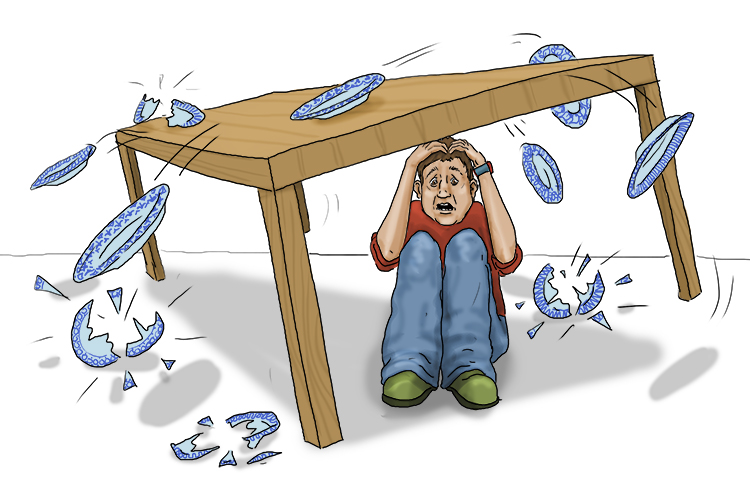Earthquakes – Sudden or violent movements of the Earth's tectonic plates followed by a series of shocks
Earthquake = sudden plate movement
To remember the meaning of the term Earthquakes, use the following mnemonic:
When the earth quakes (earthquake) the plates move (movement of the Earth's tectonic plates).

See Mammoth Memory Tectonic Plates
There are three types of tectonic plate movements that can cause earthquakes at the plate margins (edges of the plates):
Conservative plate margin (sliding)
Constructive plate margin (moving apart)
Destructive plate margin (coming together)
An earthquake is the shaking of the Earth's surface due to the sudden release of energy caused by the movement of two tectonic plates that are in contact with each other at their edges, or margins.
Earthquakes can vary in severity from those that destroy entire cities to ones that are barely discernible.
The point of initial rupture is called the hypocentre or focus. The point at ground level directly above the hypocentre is called the epicentre.
The Richter scale is the usual means of indicating the size of an earthquake, and seismology is the study of earthquakes. An earthquake that measures 1.0 to 1.9 on the Richter scale is probably not felt by anyone, but is recorded by sensitive seismological equipment. An earthquake that measures 9.0 or more on the Richter scale will cause total destruction over a wide area.




